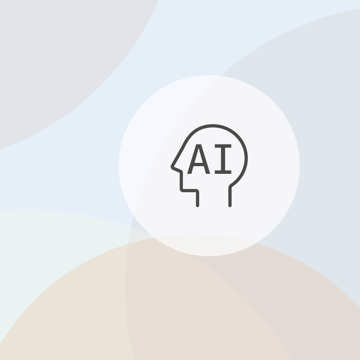01 February 2024
roadmap
austria
AI in court: friend or foe?
From autonomous vehicles, to ChatGPT, to creating a painting in the style of Monet or composing a new Beatles song, artificial intelligence can seemingly do everything.
 AI experiment
AI experiment
As part of our AI experiment in roadmap24, we have curated a few prompts and asked AI about this article. Take a look and find out what ChatGPT responded*:
But what happens when AI goes wrong? Let's say a smart chess robot breaks your finger during a game of chess?1 Who is responsible and liable? To meet the challenges of the future, the EU is planning to introduce a new Directive on Product Liability (Proposal for a Directive of the European Parliament and of the Council on liability for defective products COM(2022) 495 final) and an AI Liability Directive (Proposal for a Directive of the European Parliament and of the Council on adapting non-contractual civil liability rules to artificial intelligence COM(2022) 496 final) in addition to the AI Act.2
Are courts even equipped to take evidence and assess the algorithms, metadata and so on that make up AI, if needed? And who must present the evidence?
EU rushing to your aid against AI?
The proposed AI Liability Directive contains nine articles, only two of which are on the subject matter in question. While it does not provide an answer, it clearly places the burden of providing evidence on the defendant.
National courts will be empowered to order the disclosure of relevant evidence from a provider or user about high-risk AI systems suspected of having caused damage upon the request of a potential claimant who has previously asked a provider or user for such evidence but was refused.3 The claimant must have made all proportionate attempts to gather the relevant evidence from the defendant beforehand, and present sufficient facts and evidence for a plausible damage claim.4 Disclosure ordered by the courts in turn will be limited to necessary and proportionate evidence.5 If the defendant does not comply with the order to disclose or preserve evidence at its disposal, the court will presume the defendant did not comply with the relevant duty of care, which the defendant may rebut.6
It seems clear that the burden of providing evidence to support a possible damage claim will lie with the providers of AI. Whether they will be willing to provide comprehensive evidence remains to be seen, especially as (alleged) trade secrets identified as confidential may be subject to specific measures necessary to preserve confidentiality by the courts.7
Also, the Austrian Civil Procedure Code will require an amendment to its disclosure provisions because it only provides for very limited disclosure of specific documents or items.8
1895 to the future?
The proposed Directive naturally does not address how this "relevant evidence" should be presented in court. Judges cannot "summon" AI like a witness and ask why it broke a finger during a game of chess.
The Austrian Civil Procedure Code dates from 1895. Even though it has been amended several times, it basically relies on a witness' or party's oral testimony, documentary evidence, expert witness evidence or visual inspection. The list is not exhaustive, but sometimes judges are at a loss how to include video or other digital evidence in the court file.9 So while documentary evidence and visual inspection are the likely ways forward, it would be reasonable to introduce provisions on how to deal with large-scale digital evidence.
1Gorzala, Europäisches Haftungssystem für Künstliche Intelligenz-Systeme, RdW 2023/15 (11); link (accessed on 19.11.2023).
2See also, Wolfbauer, Bad Robot – wer ist verantwortlich, wenn KI versagt?, ecolex 2023/51 (105); Fischer/Gstöttner, Haftungsfragen Künstlicher Intelligenz aus privatrechtlicher Sicht, Jahrbuch Digitalisierung und Recht 2022, 121.
3Proposal for a Directive of the European Parliament and of the Council on adapting non-contractual civil liability rules to artificial intelligence COM(2022) 496 final, Art 3 (1).
4Proposal for a Directive of the European Parliament and of the Council on adapting non-contractual civil liability rules to artificial intelligence COM(2022) 496 final, Art 3 (2) and (1).
5Proposal for a Directive of the European Parliament and of the Council on adapting non-contractual civil liability rules to artificial intelligence COM(2022) 496 final, Art 3 (4).
6Proposal for a Directive of the European Parliament and of the Council on adapting non-contractual civil li-ability rules to artificial intelligence COM(2022) 496 final, Art 3 (5).
7Proposal for a Directive of the European Parliament and of the Council on adapting non-contractual civil li-ability rules to artificial intelligence COM(2022) 496 final, Art 3 (4).
8Sec 303ff Austrian Civil Procedure Code (Zivilprozessordnung).
9See also, Weidinger, Neue, digitale Beweismittel im Zivilprozess, ZIIR 2022, 12.
author: Sara Khalil

AI experiment
* The AI add-on to this article ..
... has been curated by our legal tech team prior to publication.
... has been compiled by AI. Its results may not accurately reflect the original content or meaning of the article.
... aims to explore AI possibilities for our legal content.
... functions as a testing pilot for further AI projects.
... has legal small print: This AI add-on does not provide and should not be treated as a substitute for obtaining specific advice relating to legal, regulatory, commercial, financial, audit and/or tax matters. You should not rely on any of its outputs as (formal) legal advice. Schoenherr does not accept any liability to any person who does rely on the content as (formal) legal advice.
